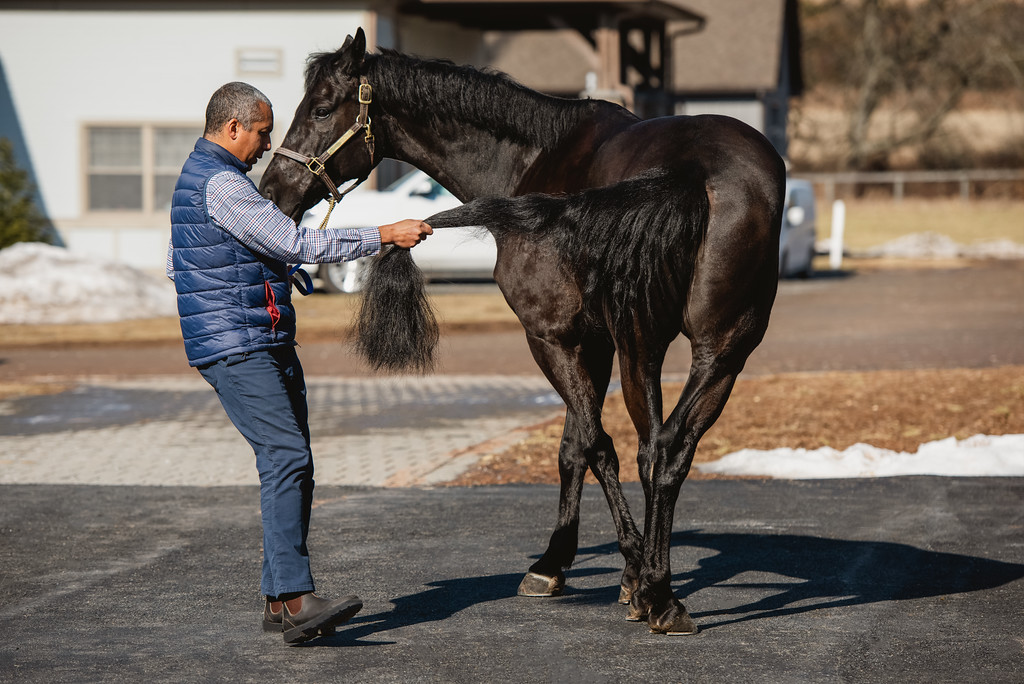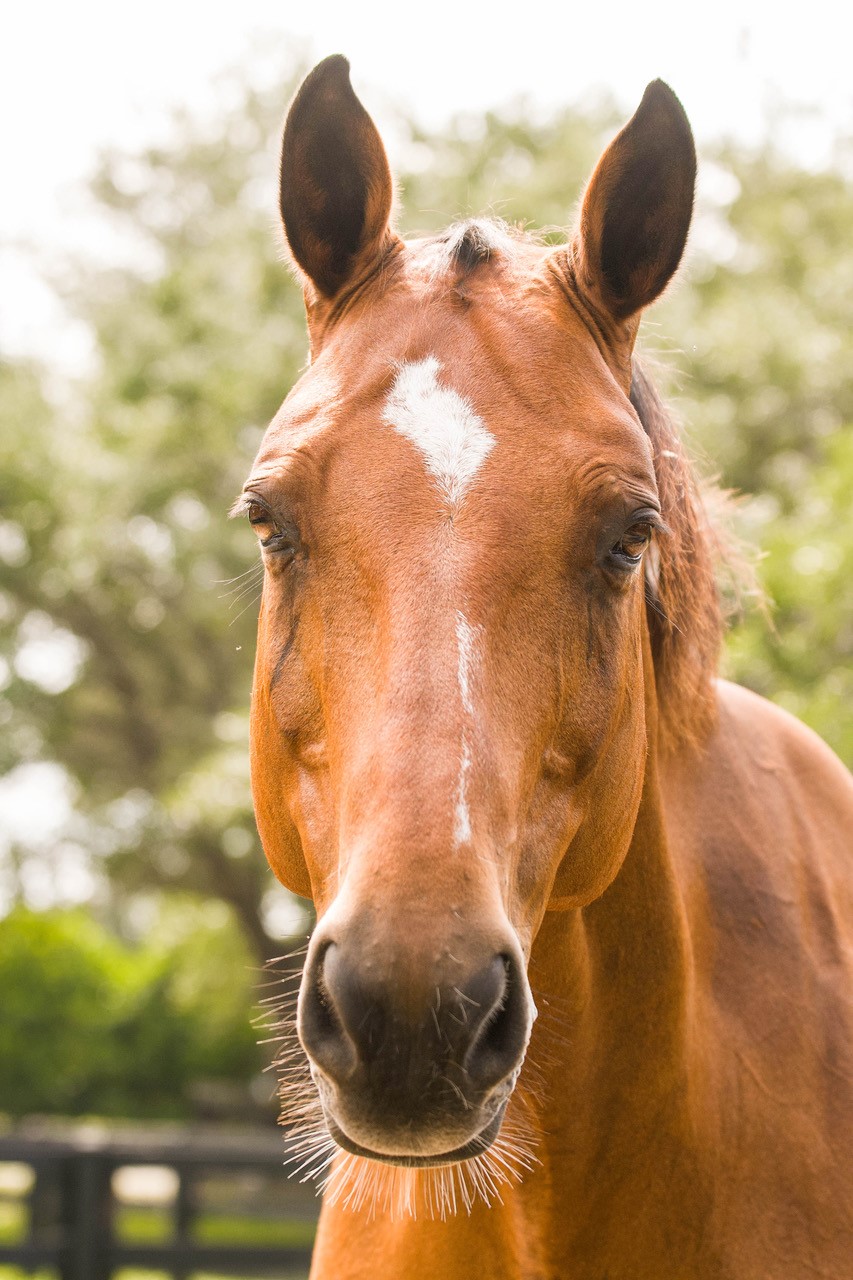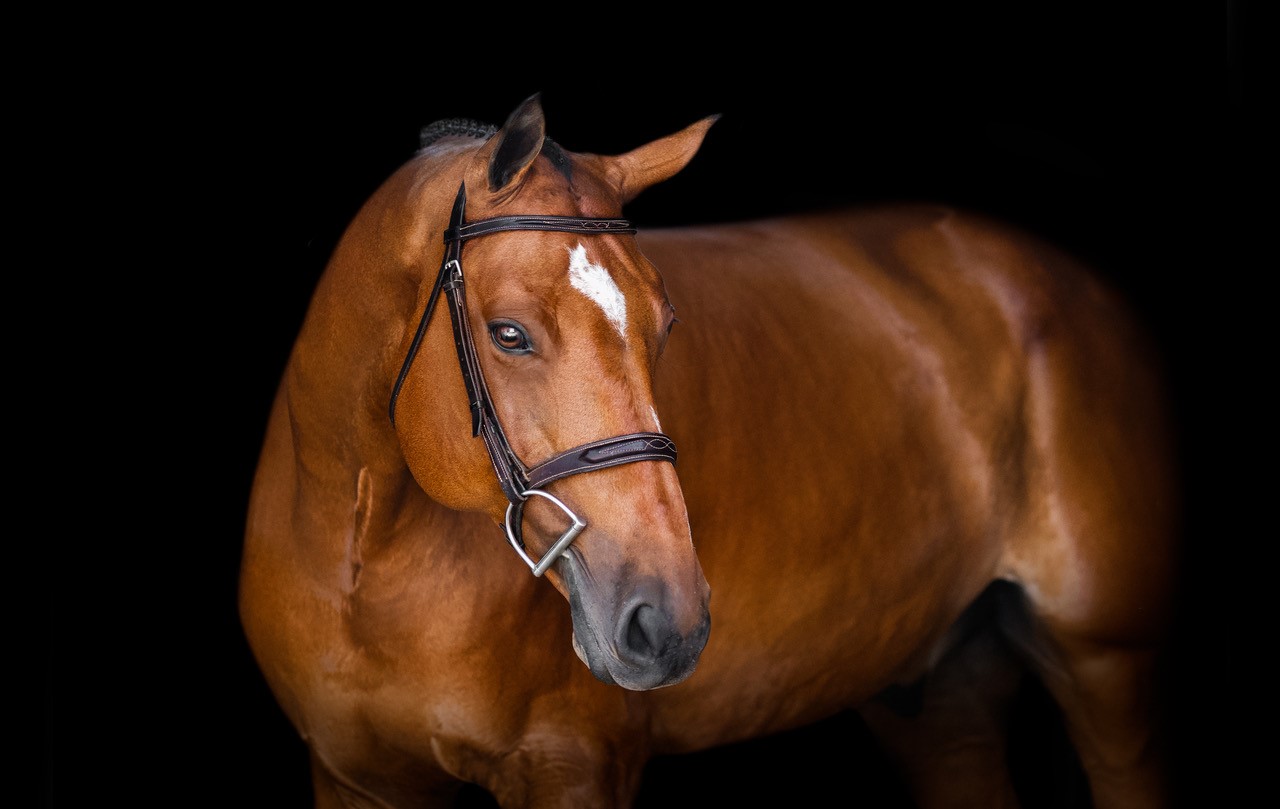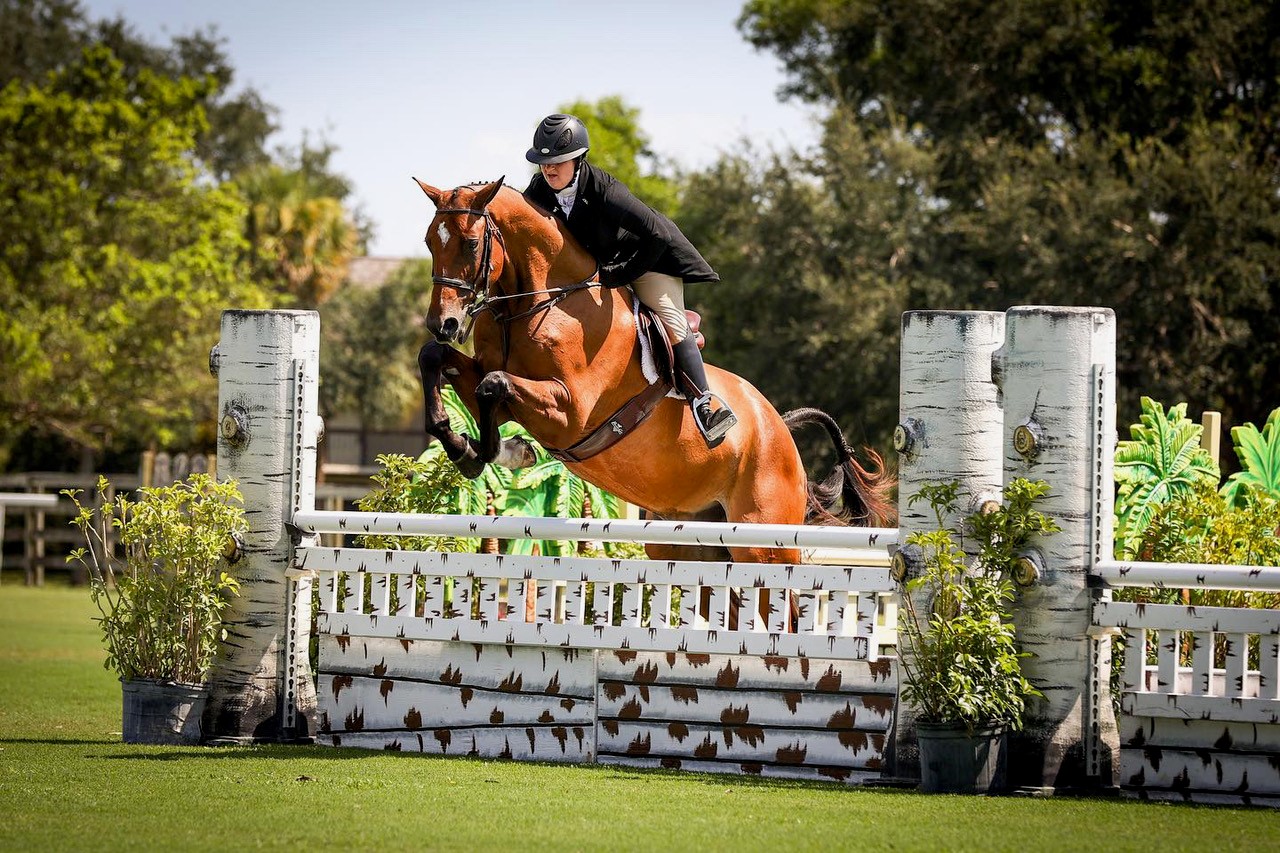Neurologic Examination

Your horse's neurologic examination is performed by your veterinarian to determine whether he or she is exhibiting clinical signs consistent with neurologic disease and to determine the origin or location of the lesion accounting for the signs seen. Neurologic abnormalities may be associated with brain involvement, spinal cord involvement, or both. In horses with subtle gait abnormalities, it can be difficult to discern whether the problem is stemming from a neurologic or lameness issue. You need an experienced clinician with the ability to perform a thorough systematic examination to make an accurate diagnosis.
Your horse may be neurologic if it has one or more of the following signs:
- It trips or stumbles intermittently at the walk, trot or while being ridden.
- It stands with its legs abnormally placed. Either its feet too wide apart or too close together.
- It has abnormal toe wear. Its toes may be rounded off from intermittent dragging of the toes.
- It has an exaggerated forelimb gait when walked with its head elevated.
- It has an uneven, spastic gait at the walk or trot.
- It knuckles over in the hind fetlocks when stopped suddenly.
Coriander, “Rian” – The Comeback King and My Miracle
 It was an August day in 2018 when I first noticed something was wrong. It was so slight, I felt crazy asking the others at the barn if they were seeing what I was feeling. Rian always tracked up perfectly behind, so when he didn’t during one of our routine morning hacks, I knew something was off. But I had no Idea what it was. The first vet had no idea what was going on, or where it was coming from and sent me for an in-hospital neuro exam. That one revealed nothing, and I was sent home with a round of Doxycycline to treat the possibility that it was a flare up of his previously existing Lyme’s disease – which it wasn’t.
It was an August day in 2018 when I first noticed something was wrong. It was so slight, I felt crazy asking the others at the barn if they were seeing what I was feeling. Rian always tracked up perfectly behind, so when he didn’t during one of our routine morning hacks, I knew something was off. But I had no Idea what it was. The first vet had no idea what was going on, or where it was coming from and sent me for an in-hospital neuro exam. That one revealed nothing, and I was sent home with a round of Doxycycline to treat the possibility that it was a flare up of his previously existing Lyme’s disease – which it wasn’t.
It wasn’t until I was referred to Dr. Belgrave at the Mid-Atlantic Equine Veterinary Hospital in New Jersey that I was actually able to grasp what was going on. Dr. Belgrave conducted another neuro exam, took more x-rays of his neck, and shared with me what he saw. It was suggested that we admit Rian to stay for a myelogram and spinal tap to rule out EPM. EPM came back negative, and the results of the myelogram revealed every sport-horse owner’s worst fear. Spinal cord impingement at C6-C7 causing neurologic deficits, AKA equine wobblers Syndrome. Dr. Belgrave suggested that we consult with Dr. Grant in California to see if Rian would be a candidate for surgery. If not, my other option was an early retirement.
At this point in our journey, I was a terrified college senior, away from my parents, with a neurologic horse after just losing my first horse 2 years prior. I was crushed and determined to do anything in my power to save Rian. He was only 10. And so full of life, truly loved his job and being my partner. I couldn’t put him in a field and forget about him – not without trying.
Around December of that year Dr. Grant reached out to let us know that Rian was a good candidate for surgery, and he believed he could help him return to some level of a riding horse. He told us he had a trip planned for mid-January to perform the same surgery on another horse and he would be able to operate on Rian then. My dad agreed to allow Rian go through with the procedure, trusting Dr. Grant’s confidence and expertise as much as I did. I’ll never forget right before Rian went in my dad questioned “will he ever jump again” and Dr. Grant smiled and said “well, did he jump before.” And left it at that.
Dr. Grant let me watch him perform the surgery – an experience I will treasure and remember forever. He sent us out before closing up and sending Rian into recovery. When Dr. Grant came out to get us he informed us that Rian’s recovery was textbook. Although it may seem like the hard part was over, the surgery was the easiest part. What followed the procedure itself was months of rehabilitation. I researched all about proprioception and ways to improve it in horses and was ready to get to work.
Rian spent 60 days in his stall without any hand walks, grazing, or even coming out to be groomed. My dog, piper, and I visited him every day for his daily grooming and snuggles. Each vet check following stall rest brought us a little closer to where we are now. Rian was finally cleared to trot, after months of tack walking, by the winter following his surgery, about 1 year later. We trotted the long sides only, until we were cleared to turn around the whole ring. As he excelled in his trot work, he was cleared to start cantering on the lunge line following trotwork under saddle and before I knew it we were back to regular flat work. We took our time and by the time Rian was 2 years post-op we were cantering poles, and incorporating the smallest jumps to make sure he would be safe to return to his previous career.
We are now coming up on 5 years since Rian’s procedure, we have relocated to Wellington, FL where Rian lives out his days as a true king, and is showing against some of the nicest horses in the world, and still catching the judges’ eyes. Most recently, Rian and I competed in a 3’ – 3’6” USHJA national hunter derby where he jumped each fence with ease and grace. Everywhere we go, people are shocked to hear where Rian has come from compared to the horse they are seeing out at the shows! Rian feels better, more comfortable, and more confident than ever before and we have Dr. Grant to thank for that. I am so eternally grateful and indebted to Dr. Grant, Dr. Belgrave, my vet from NY who referred us and oversaw his whole case, Dr. Allison Williges, and my family for believing in Rian as much as I did.
Rian is truly the comeback king and a true miracle horse thanks to Dr. Grant and this incredible procedure that gave him a second chance at life.


